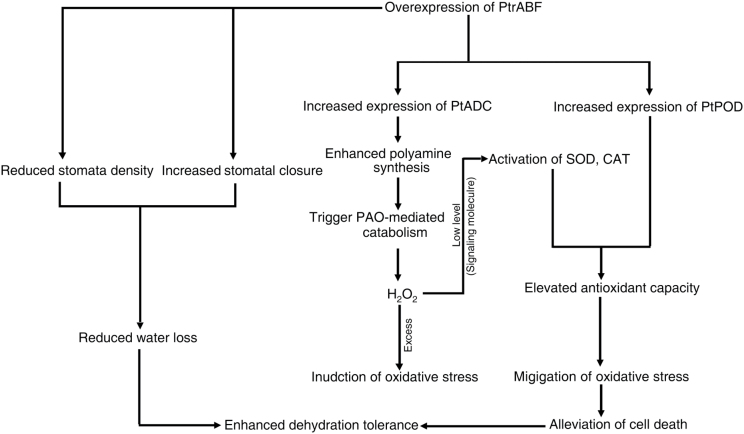Fig. 10.
A proposed mode of action of PtrABF based on the current study. In this model, PtrABF mediates dehydration tolerance via two major mechanisms: (1) mitigation of water loss by stimulating stomatal closure and decreasing stomatal density through interacting with PtrICE1; and (2) transcriptional regulation of target genes encoding enzymes associated with antioxidant (POD) or polyamine synthesis (ADC), by interacting with ABRE cis-acting elements. Higher levels of polyamines trigger catabolism mediated by PAO. This generates low levels of H2O2 at the initial stage of stress, which serves as a signalling molecule that activates stress-associated genes, including those encoding antioxidant enzymes. As a result, antioxidant capacity is enhanced, which in turn expedites detoxification of excess ROS and leads to a reduction in the oxidative stress and the alleviation of cell death.

